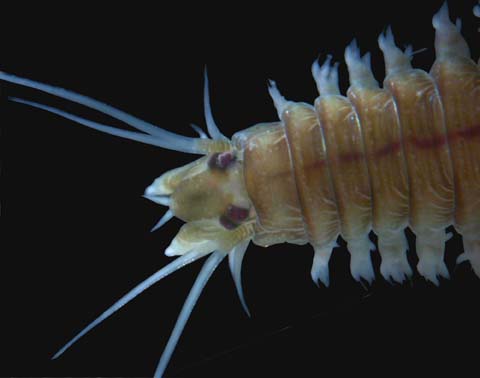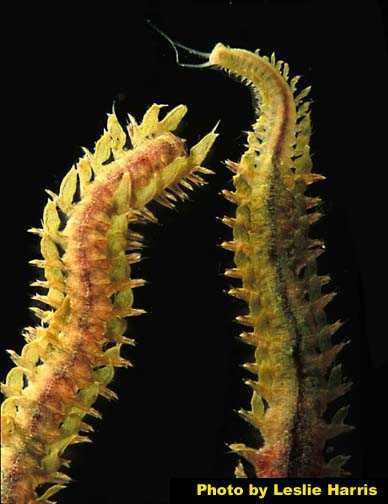California Academy of Sciences
Home What is a Settling Plate? Settling Plate Organisms Participating Schools Get Involved!
Neanthes succinea (Frey and Leuckart, 1847)
Non Native
Neanthes succinea (commonly called "pile-worms") are relatively large (adults from 30-50mm), cylindrical and slightly iridescent polychaete worms which are commonly used as live bait. This cosmopolitan species (populations of Neanthes occur in many temperate locations around the world) is not native to San Francisco Bay. It was most likely introduced to the Bay from the northern Atlantic in ship fouling communities (animals living on hulls) of ocean-going ships or with shipments of Atlantic oysters. Neanthes has now become extremely common in local benthic communities, as well as in many ports worldwide.
This species is euryhaline, or able to tolerate a wide variety of salinity conditions, allowing it to colonize dramatically different habitats and contributing to its success in the Bay. N. succinea may be exploiting a niche between two native worms of the same family, the salt-loving (polyhaline) Nereis vexillosa and the more freshwater (oligohaline) Nereis limnicola (Cohen and Carlton 1995). Oglesby (1965a) wrote that N. limnicola may actually be restricted to the freshest regions of the estuary by the presence of N. succinea.
N. succinea occurs commonly in dock fouling communities of local marinas, among mussel and oyster beds, as well as subtidally (typically in 2 meters of water or less) in mud or sand and intertidally under rocks. Like nearly all nereids, it is equipped with a set of fierce-looking jaws on the tip of its proboscis which it can "shoot out" to prey upon soft-bodied animals or graze on detritus and plant material. These are active worms with large paddle-like parapodia for crawling, but will construct mucus-lined burrows or tubes in which they typically hide in the daytime, emerging to feed at night.
During reproduction, both sexes transform into epitokes (modified, more active reproductive forms) called heteronereids that are filled with gametes. Sexes in these stages swarm together, following the release of pheremones stimulated by the lunar cycle. During swarming, the body walls of the epitokes rupture, releasing the gametes and allowing fertilization to occur.

dorsal head region with everted proboscis
posterior regions showing enlarged notopodial lobes and placement of dorsal cirri

heteronereid with enlarged eyespots


